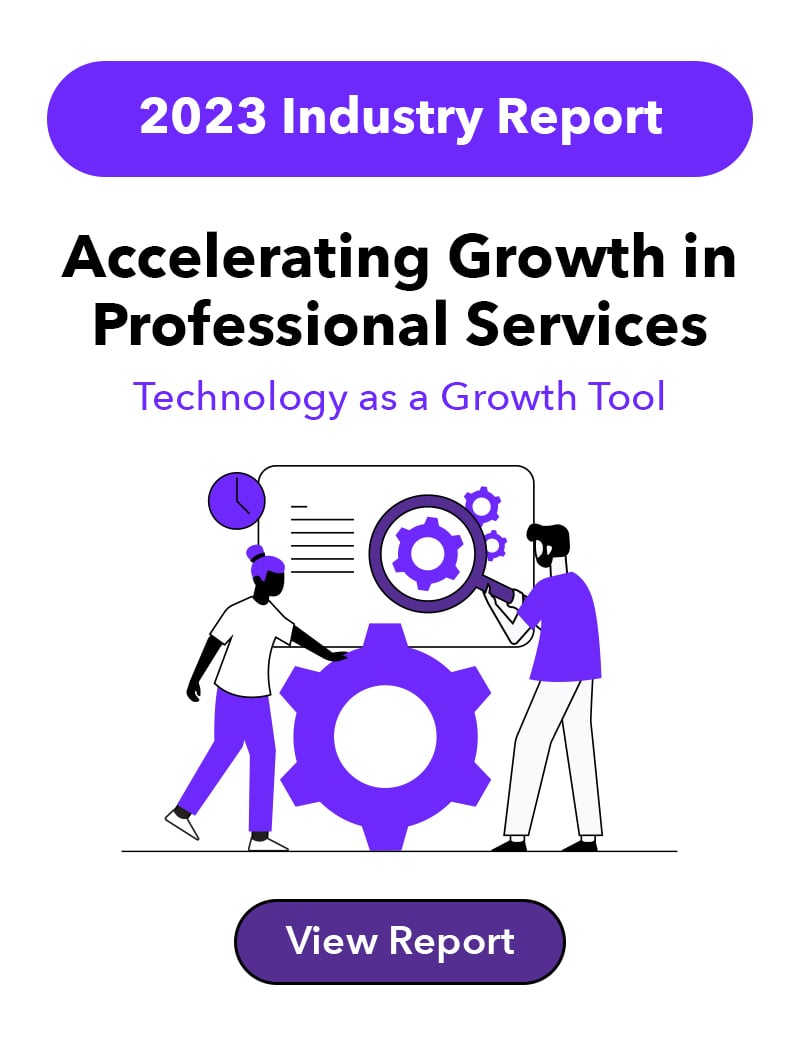In today's fast-paced and interconnected world, the way consumers seek professional services has undergone a dramatic transformation. Whether they’re searching for legal advice, accounting assistance, or any other specialized service, the modern client experiences a vast array of new brand touchpoints that didn’t exist just a decade ago.
This shift in behavior necessitates an equally modern and integrated marketing strategy – one that seamlessly blends traditional methods with cutting-edge digital strategies.
Professional Services Face Ever-Evolving Marketing Needs
Professional services firms have long relied on traditional marketing channels such as corporate events, public relations, print materials, and even billboards to reach their audience. These methods have historically been effective (if difficult to measure) but are no longer enough to drive sustainable growth in today's competitive landscape.
But designing an integrated marketing strategy doesn’t mean abandoning these time-tested tactics; it means using the strengths of one to make up for the weaknesses of the other.
Digital marketing has risen to prominence, offering unique advantages that complement traditional efforts.
A study by 99designs delves into the pros and cons of digital and traditional marketing, emphasizing how the two can work together synergistically to create a more robust marketing foundation. The key differences are in how measurable, engaging, permanent, and expensive the method of choice is.
That being said, there’s no one-size-fits-all for marketing, and every firm should experiment to find the right mix of channels.
The Modern Client Search
A significant portion of today's clients, especially Millennials who make up an increasing share of the market, initiate their search online.
In fact, 76% of all consumers begin their journey by exploring a company’s digital and online presence before visiting a physical location as a normal part of their decision-making process.
This shift underscores the importance of proactively targeting the digital space. Managing your online reputation across platforms becomes crucial, as an inactive or outdated online presence could lead potential clients to perceive your firm as less innovative and forward-thinking.
Even if a client learns about your services through a traditional channel like an event, a lackluster online presence could leave them with doubts about your firm's capabilities and relevance. This phenomenon is grounded in psychology and the power of first impressions, making it essential to create a strong and consistent digital identity.
What Does an Integrated Marketing Strategy Look Like in Practice?
1. Define Your Buyer Personas
Creating an integrated marketing strategy begins with a deep understanding of your buyer personas. This involves identifying the characteristics, preferences, and behaviors of your ideal clients.
By doing so, you gain insights into where your prospects are most likely to engage, guiding your approach to both digital and traditional channels. With this insight, you can determine which personas should be engaged on certain channels at certain parts in the journey.
For example, if you find that one of your personas very rarely goes on social media, while another rests a lot of their buying decisions on your social presence, you can curate your social media posting strategy to talk more directly to the latter.
Even if you've defined these personas before, it's vital to revisit and periodically refresh your data.
2. Support Your Traditional Campaigns With Digital Components
The core of a well-integrated strategy lies in its ability to enhance traditional campaigns with digital elements. As we mentioned, you should not abandon your traditional marketing methodologies, you should simply use digital elements to strengthen some of the blind spots they leave.
This approach lets you amplify both your new and existing campaign investments, increasing their impact across different touchpoints.
Here are a few examples of adding a digital component to your traditional campaigns:
- Incorporate QR codes in direct mail materials to lead recipients to curated online landing pages.
- Nurture event-generated leads through personalized email nurturing sequences.
- Repurpose TV commercials into bite-sized clips for social media consumption.
- Encourage service providers, such as lawyers and accountants, to build their personal brand on LinkedIn, reinforcing your pitch presentations.
3. Consistent Branding Across All Channels
Potential clients are likely to encounter your firm across various digital and traditional contexts. It’s rare that prospects will engage solely with digital or traditional channels.
To ensure a cohesive and memorable experience, it's imperative to maintain consistent branding – both visually and in terms of messaging.
Designate one individual or team to oversee all marketing campaigns to prevent any disconnection between channels and to ensure a unified brand identity.
Often, professional services firms that focus on digital marketing in addition to traditional marketing will have separate teams to lead each strategy. This disconnect can lead to a disjointed experience, leading to confusion around your main messaging.
4. Use Technology to Support Your Efforts
When your team focuses solely on traditional marketing channels, less technology is required to keep everything moving. But exploring new digital channels requires a robust toolbox to streamline processes and minimize the challenges that come with adopting novel strategies.
Incorporating new tools and technologies can help ease the transition and maximize the benefits of your integrated approach.
Consider adding the following tools to your martech stack if you haven’t already:
- Email marketing platform
- Social media scheduling tools
- Data management solutions
- Design tools
- Content management systems
- Project management software
- Content automation platforms
Give Your Team the Edge to Compete
In an era where the client's journey is increasingly diverse and digital, the need for an integrated marketing strategy is non-negotiable for professional services firms.
Blending traditional marketing methods with modern digital approaches not only widens your reach but also ensures that your firm maintains a relevant and innovative image. The key lies in harmonizing the best of both worlds – the time-tested techniques of yesterday and the dynamic digital possibilities of today.
Download our eBook, The Pitch That Seals Deals: A Guide for Professional Services to discover actionable tips that will empower you to create compelling pitches that win more business.
 Sep 5, 2023
Sep 5, 2023




